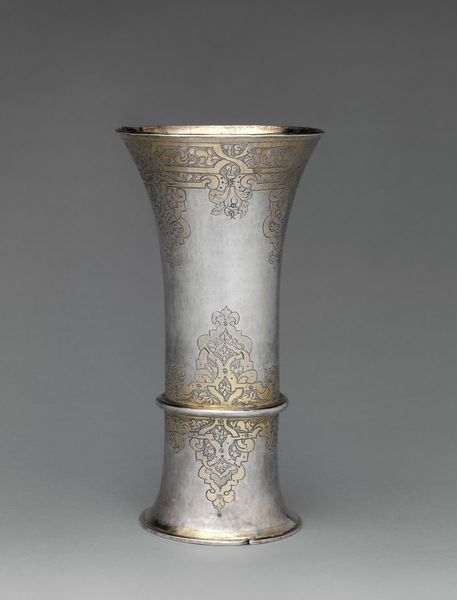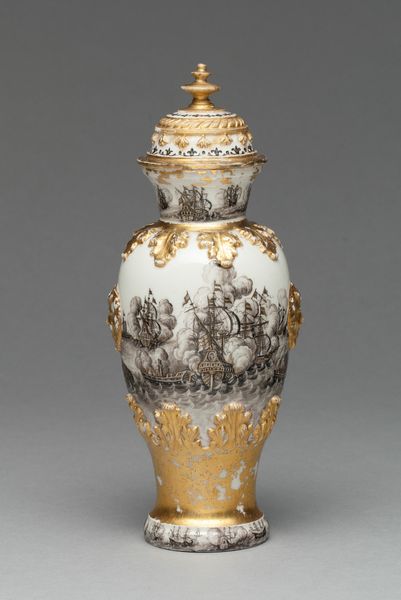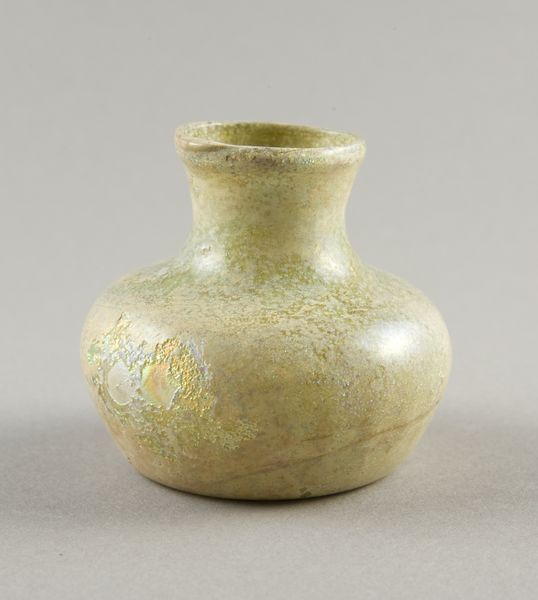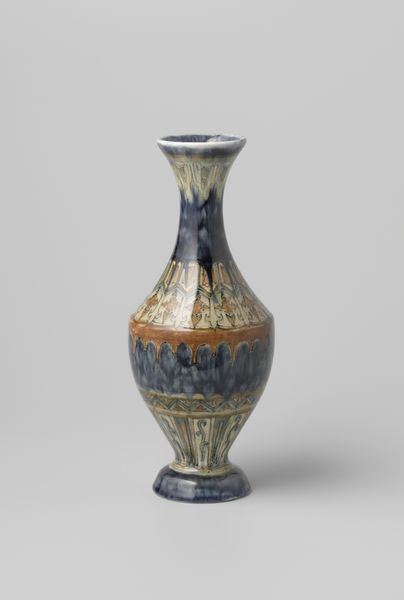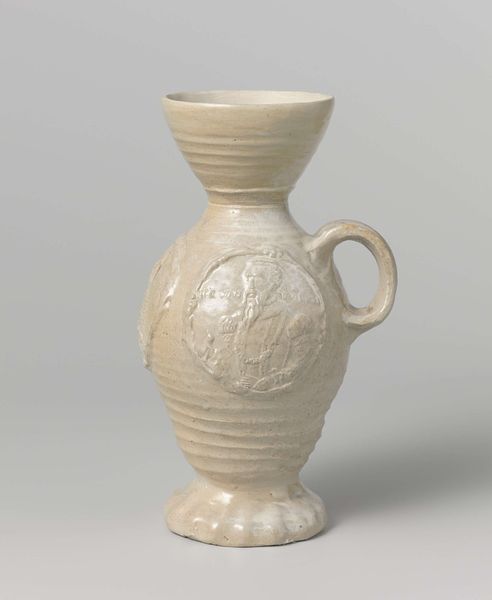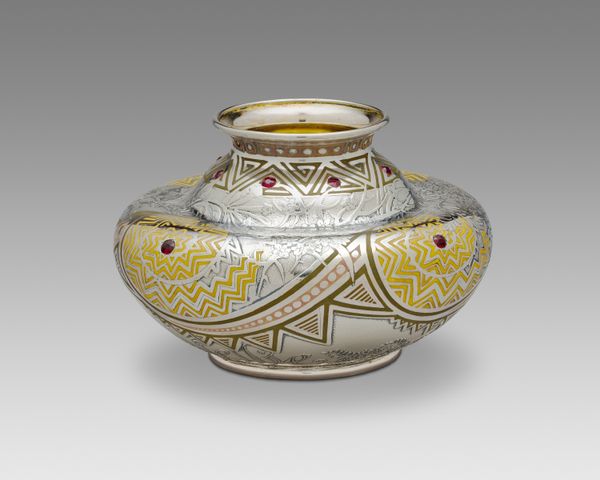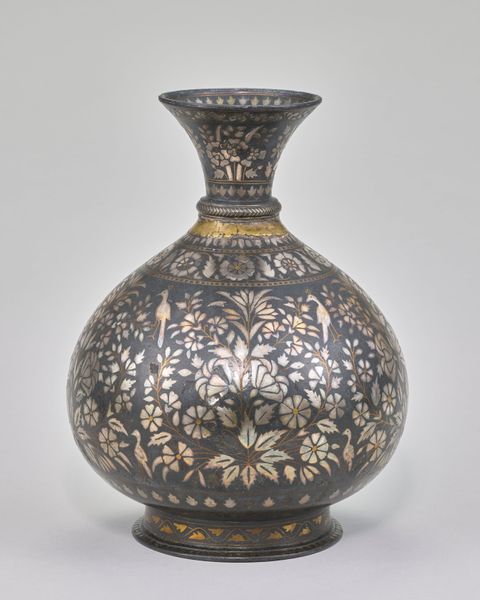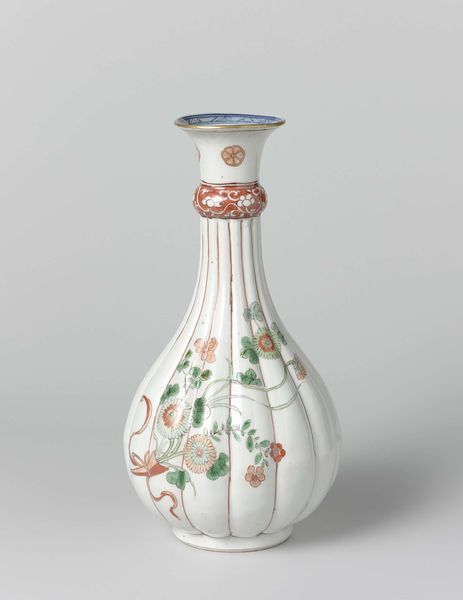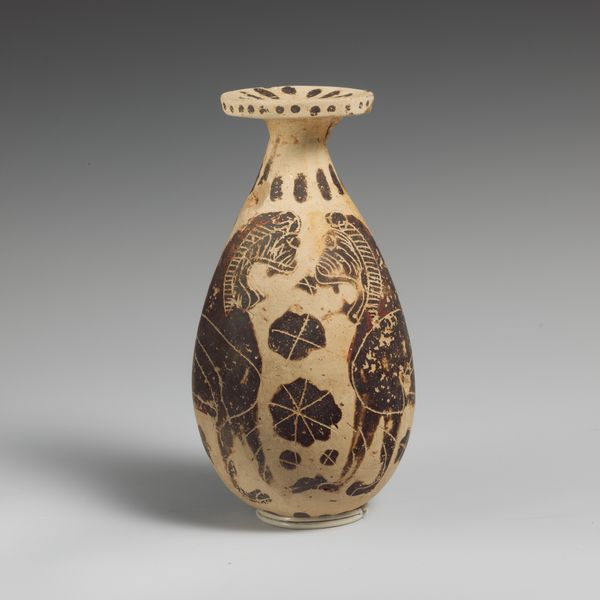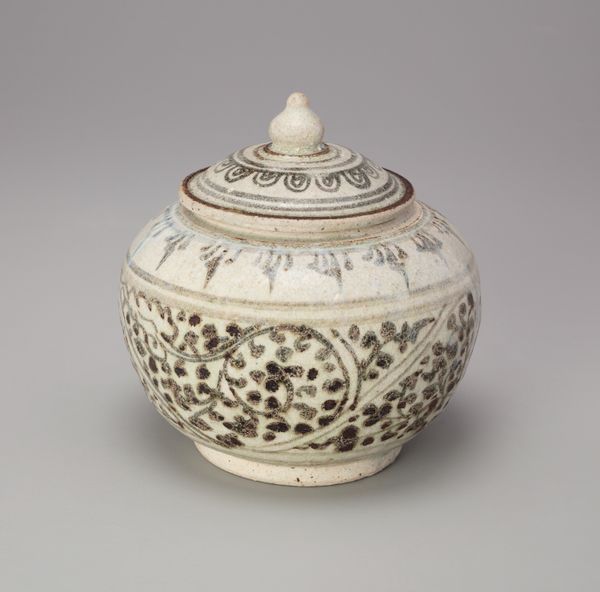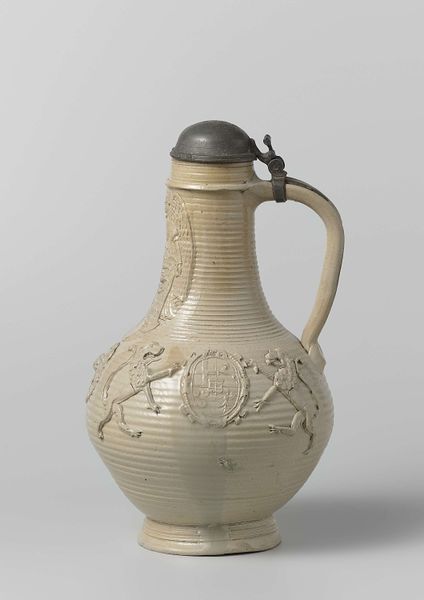
Pear-shaped vase with monster heads and gilded bands with ruyi motif c. 1750 - 1799
0:00
0:00
ceramic
#
asian-art
#
ceramic
#
ceramic
Dimensions: height 16.8 cm, diameter 6 cm, diameter 9 cm, diameter 5.7 cm
Copyright: Rijks Museum: Open Domain
Curator: What a curious artifact! At the Rijksmuseum, we have this ceramic pear-shaped vase, datable to around 1750 to 1799. It is ornamented with monster heads and gilded bands featuring the ruyi motif. Editor: Well, my first impression is that this vase feels intentionally distressed. Look at the cracked glaze. It creates such a fine, almost organic, web of fissures across the surface. The interplay of the crackle against the smooth gilded ornamentation is striking. Curator: Absolutely, I see how the contrast seizes attention. These “cracks,” are not necessarily a defect. The intentional crackling, is referred to as "crackled glaze". Looking at its structure, the three gilded ruyi bands define its form, demarcating its neck, midsection, and foot, almost as though containing the vessel’s latent energy. Editor: Interesting. The “ruyi” are also worth further consideration. Those stylized cloud-like forms carry immense cultural weight, don't they? A symbol of power and good fortune… fitting, considering the grotesque 'monster head' handles! Curator: Precisely. Notice their stylization—almost decorative rendering the vessel more accessible and playful than threatening, even. Consider how they function structurally, the metal rings adding an eccentric tension to the delicate porcelain form, challenging its static nature, almost like they might dance on their own. Editor: So, the overall structure speaks of controlled power and the potential for chaos. An intriguing philosophical concept to represent on something intended for decorative, perhaps even ceremonial use. The artist uses controlled design—these gilded bands to keep it all ‘together.' Curator: It makes me think, in relation, to how often we are reminded, through philosophical channels and practices like mindfulness that by acknowledging a controlled structure for a vase and the internal contents, we might, ourselves, better comprehend structure. Editor: Yes, the structure creates some balance to understand not just that, but potentially its use. It might reveal the cultural norms to which it belongs. And who gets to interpret it, both then and now? Intriguing to muse.
Comments
No comments
Be the first to comment and join the conversation on the ultimate creative platform.

